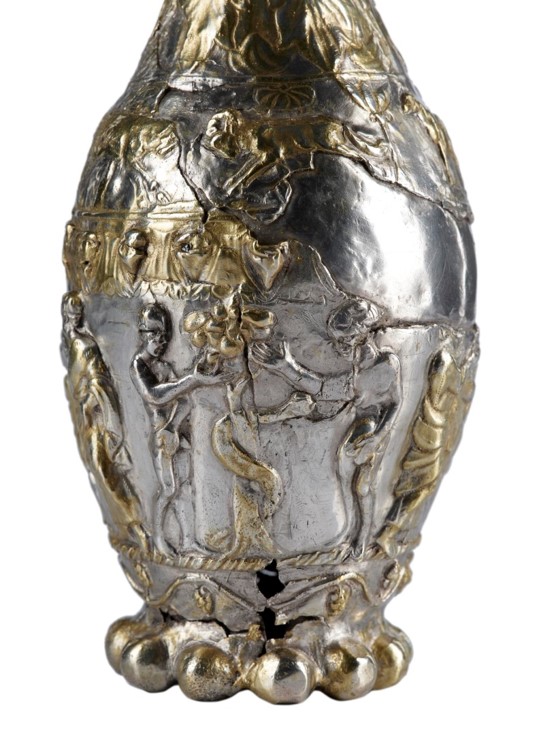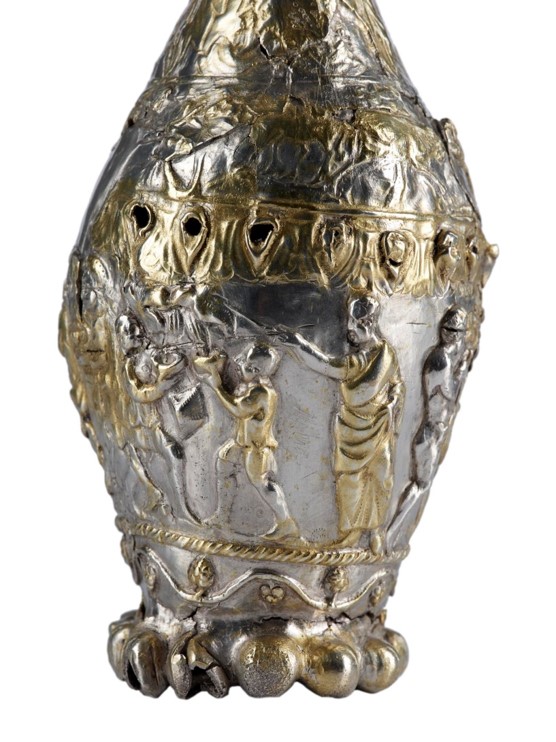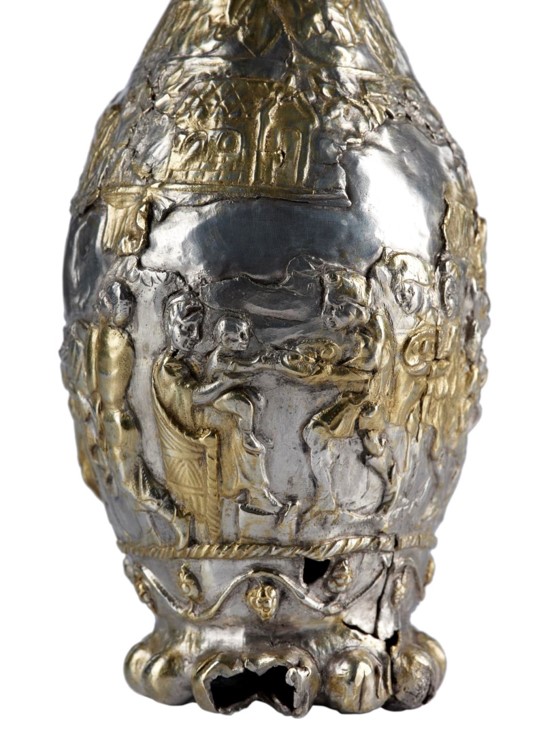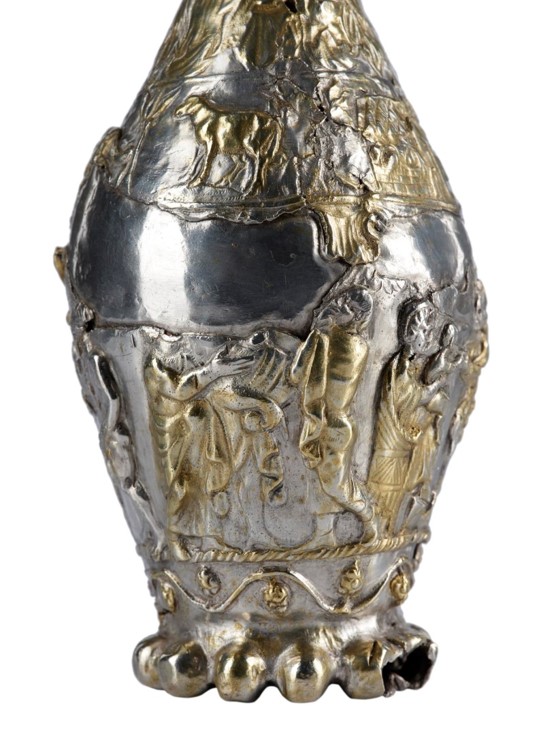Across much of the rest of Europe, this Thursday, 30th May, is a holiday – Ascension Day, marking Christ’s ascension to heaven after his resurrection, 40 days after Easter. Here in Edinburgh, it will pass with barely a glance – and yet new research has shown that our collections here at the National Museum of Scotland contain a remarkable Roman-period commemoration of this event.
Eager readers will have found my earlier blog post about our new research into the Traprain Treasure, the great hoard of hacked-up Roman silver from East Lothian – we marked the centenary of its discovery earlier this month, and are in the final stages of preparing a big new book on the topic. This has relied on scholars from all across Europe – and one of them has solved a long-standing puzzle for us.
Josef Engemann was Professor of Christian Archaeology at the University of Bonn for many years. In his retirement, he agreed to help us with one of the problem-pieces from Traprain Law – a wine jug with biblical decoration. This has a narrow upper band with depictions of animals and a building, and a larger lower one with scenes from the Old and New Testament. It’s one of the earliest and most spectacular Christian finds from Britain.
You can see the flagon in 360° below – hover over the image to see it spin round.
Three of the scenes are easy to identify. Two come from the Old Testament. This one shows Adam and Eve in the Garden of Eden, about to eat the forbidden fruit from the tree of knowledge– the serpent is wound round the tree, offering all sorts of temptations.

Adam and Eve in the Garden of Eden.
To the left of this, we see Moses, striking the rock of Horeb with his staff to make water flow from it. This saved the Israelites in the desert after they were expelled from Egypt.

Left again, and we come to a key New Testament scene – the birth of Christ, with Mary (sitting in a rather natty wickerwork chair) and the Christ-child receiving the three Wise Men. It’s the oldest depiction of this scene known from Britain. The funny hats which the Wise Men wear mark them out as men from the East – this was the traditional headgear of the Near East.

Josef Engemann’s research has shown a new side to this story. The narrow upper frieze has always been interpreted as a space-filler, with pictures of animals representing rural tranquility. But there’s a building shown, placed directly above Mary and the Christ-child – and Engemann argues it represents the stable where Christ was born. The rest of the scene shows sheep, a dog, and rather damaged shepherds – presumably those who first heard of Christ’s birth from an angel. In the sky is a star, leading the Wise Men to Bethlehem. So the lower and the upper scenes are linked together to tell the story of Christ’s birth.

But what about the fourth scene? It’s badly damaged, which has allowed scholars to speculate widely (and wildly). Some have argued it represents the betrayal of Christ by Judas, or St Peter disowning Christ; others have seen it as a representation of the Old Testament miracle of the Quails in the Desert. But none of these really work – it doesn’t look like other versions of the Betrayal or the Denial, and quails are notably absent from the scene.

Josef Engemann has a better theory. The right-hand figure probably is St Peter, looking astonished. The figure on the left is too battered to identify, but the central man is critical to the story. He appears to have only one leg – it’s an artistic device to show he’s moving at speed, his other leg obscured – and he points to the ground. It’s part of the Ascension story – when Christ went to heaven, two white-clad figures (presumably angels) appeared on earth to explain what had happened, saying he would return – the central figure is pointing to the very spot.
It’s an impressive piece of detective work, with more twists, turns, dead ends and strands of evidence than I can go into here, ranging from Berlin through North Africa to Syria. It convinces me – but to see for yourself, you’ll need to buy the book …
